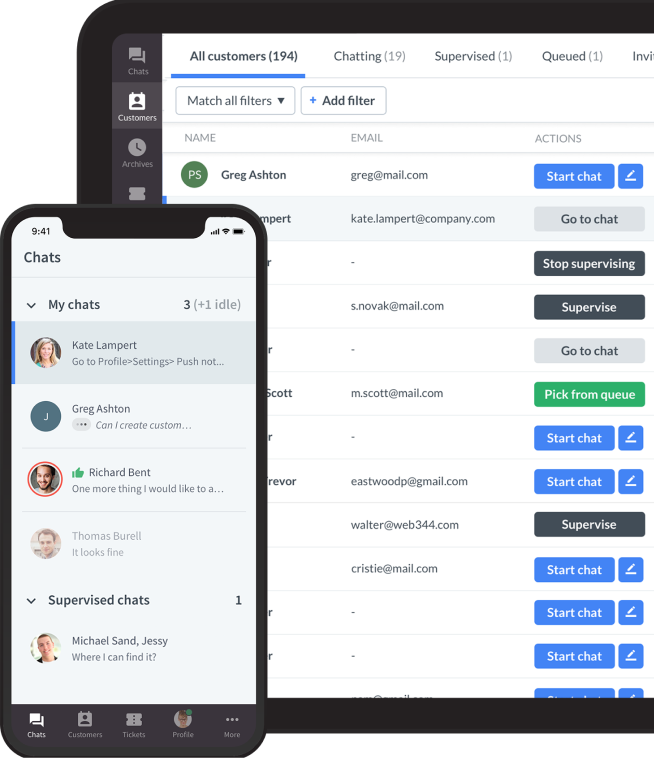Showing top 0 results 0 results found
Showing top 0 results 0 results found

People are changing their shopping habits. These changes were trending before 2020, but, with the multitude of challenges retailers have faced this year, many of those changes will surely become permanent.
Since early 2020, consumers are making more purchases online, making fewer individual shopping trips, and moving away from their former favorite stores. However, when they do shop, they’re spending more. A full 17% of U.S. shoppers have switched to a different primary store this year. In China, the number of transactions at grocery stores has gone down 30%, but the average amount of each transaction has gone up 69%. At the same time, online sales for beauty products, clothing, and department stores have surged 10%.
Along with these changes, consumers have different expectations for what they want out of their shopping experience. This gives ecommerce retailers an opportunity to gain more customers and increase their bottom line. To do so, they’ll need to recreate the in-store buying experience online. Of course, this can be challenging, but, done correctly, the benefits can be enormous.
With that in mind, here are 10 steps you can take right now to make your ecommerce customer experience as pleasant as an in-store shopping experience.
Content is king
What many people miss the most from shopping in a brick-and-mortar store is physically experiencing a product. This can mean simply holding a product, seeing it for yourself, or, in the case of apparel, trying something on. Because of this, it’s critical that the content on your ecommerce site provides absolutely thorough descriptions so that customers can experience the look and feel of a product.
Use high-quality photos
If a customer can’t hold or try on a product, photos need to replace some of that in-store experience. However, just having photos of all your products isn’t enough. Above all, they need to be accurate. Additionally, the most effective product photos will have the ability to zoom in on a particular area, be in HD, and have 360-degree functionality. Photos with those qualities will help sell the product and give your customers a better sense of what the product is like.
Video content is your friend
Video content is quickly becoming the preferred online channel for customers to learn about a product. Four times as many customers want to see a video about a product versus reading about it. On top of that, a full 25% of customers were no longer interested in a company that didn’t offer video content. Product videos need to be high quality, instructive (think tutorials), and show the product in all its glory.
Excellent copywriting is a must
Despite the fact that many consumers prefer video, solid copywriting still needs to be a priority. Over half of consumers mainly depend on a company’s website to learn about a product before they buy it. Knowing that, it’s incredibly important that businesses offer in-depth and accurate descriptions about their products. Content that adds value is also important, so consider adding buying guides, product collections, or tailored recommendations to your content lineup.
Livestreaming is becoming more popular
With fewer in-store interactions, livestreaming is a good way to actively engage customers. Business owners or staff can livestream to show off current products or promote new product line launches. You can also move away from directly promoting products and livestream demos that include your products. For example, a boutique grocer can offer cooking classes or a beauty product retailer can offer lessons about applying their products. Whatever the case, high-quality livestreams will increase customer loyalty and revenue.
User-generated content helps customers feel safer
92% of customers trust user-generated content (UGC) more than they trust traditional advertising. One of the most important aspects of UGC are product reviews and comments. Encourage customers to comment or review a product right after they buy something because that is when they are the most pleased with their purchase. These can then be compiled on the product page to show how much people love what they bought from your store. Honest product reviews and comments will go a long way in establishing trust with potential customers.
Top-notch customer service matters more than ever
Providing excellent customer service can make or break your ecommerce customer experience. More than ever, when customers need help, they want it now. There are a few simple ways to make sure that they get a quick, knowledgeable response to their questions.
Omnichannel support is becoming the standard
Integrate all of your digital channels so that you are meeting your customers where they’re at. Customers are on a variety of channels, so you need to be on them, too. It’s the best way to ensure that they can reach you if they have a question before a purchase or if they have a problem with a past order.
Use live chat or chatbots to be available 24/7/365
Using live chat will allow you to communicate with your customers in real-time. Live chat agents will be able to answer questions about products that will help you actively sell while also providing opportunities for upselling. Focus on helping your customers by having live chat agents get to know your customers so that they can make qualified recommendations. This will also help recreate the in-store experience of having someone help you find a product you didn’t even know you were looking for. Often a feature of live chat, chatbots can be there for customers when your agents are sleeping, on vacation, or otherwise unavailable.
Get virtual
With people staying at home more and not going into physical stores, the virtual world is how some of those in-store experiences are accomplished now.
Virtual appointments can seal the deal
Allow customers to schedule virtual appointments with trained staff. These virtual appointments can be conducted on any of the popular videoconferencing applications like Zoom, Google Meet, Skype, etc. During these appointments, you’ll have the opportunity to have a one-on-one conversation with customers. They’ll be able to describe what they are looking for, show examples of things they like, and get personalized care from your staff. Although not in person, these appointments will allow you to recreate an experience much like it would be on the physical sales floor.
Virtual try-on is a game-changer
The most common problem customers face when buying clothes from an ecommerce store is being unsure if the item will fit correctly. Online purchases of clothes are returned at a rate of 20%. One way to ease this difficulty is by offering a way for customers to virtually try a product on like they would in a fitting room. Levi’s has introduced a ‘virtual stylist’ that helps customers find their ideal pair of jeans. It also recommends sizes in an effort to curb returns. Likewise, Zenni Optical also lets customers ‘try on’ their glasses by using an on-site avatar or uploading your own photo.
Keep it simple
Don’t overcomplicate the buying experience. Just like if they are in a physical store, customers want to be able to find what they are looking for quickly. Do them, and you, a favor by keeping this in mind with the design of your ecommerce site.
Make it easy
Of course, there are a lot of things to consider when designing your ecommerce website. This step isn’t about all of those things, but, rather, it’s about the one single thing that will help you most effectively recreate an in-store experience. Simply put, make it easy for customers to find, and buy, what they want. Your highest-selling products should be easy to find. It’s a no-brainer that ecommerce stores that are straightforward, easy to use, and effortless to buy from will sell more products. Remember, the first page of Amazon listings for a particular product get almost 66% of all product clicks.
These days, it seems like the world is changing faster than ever, and that’s just as true when it comes to customer’s shopping habits. To stay relevant and drive sales, you’ll need to make the online shopping experience as efficient for the customer as in-store shopping. By implementing the steps above, you’ll be well on your way to creating a dynamic shopping experience.
Get a glimpse into the future of business communication with digital natives.
Get the FREE report







Comments